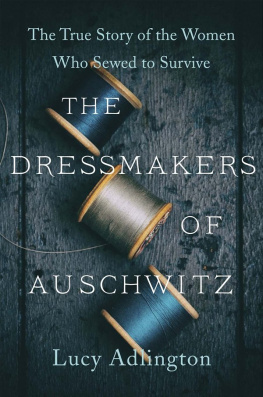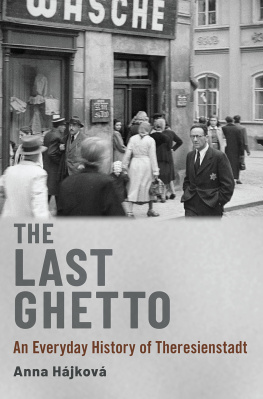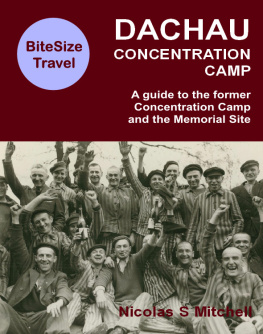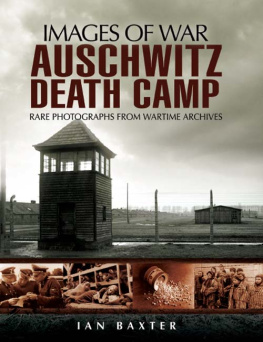In
MEMORYS
KITCHEN
In
MEMORYS
KITCHEN
A LEGACY FROM THE WOMEN OF TEREZN
edited by
Cara De Silva
translated by
Bianca Steiner Brown
foreword by
Michael Berenbaum

The author gratefully acknowledges permission to reprint from the following source:
An Evening in Terezn by Eva Schulzov and I am a Jew and will be a Jew forever by Franta Bass from... I never saw another butterfly... , as they appear in the Schocken Books edition. Copyright 1993 Schocken Books. Used by permission of the Jewish Museum in Prague.
Design by Pamela Roth.
This book was set in 12 pt. Goudy by Alpha Graphics of Pittsfield, New Hampshire.
Copyright 1996 by Anny Stern, Cara De Silva, and Bianca Steiner Brown
All rights reserved. Printed in the United States of America. No part of this book may be used or reproduced in any manner whatsoever without written permission from Jason Aronson Inc. except in the case of brief quotations in reviews for inclusion in a magazine, newspaper, or broadcast.
Library of Congress Cataloging-in-Publication Data
In memorys kitchen : a legacy from the women of Terezn / edited by
Cara De Silva ; translation by Bianca Steiner Brown and David Stern ;
foreword by Michael Berenbaum.
p. cm.
Includes bibliographical references.
ISBN: 978-1-56821-902-8
1. Terezn (Czech Republic : Concentration camp) 2. Cookery,
Jewish. 3. Holocaust, Jewish (19391945) I. De Silva, Cara.
D805.C915 1996
940.53'18'094371dc20
96-13675
CIP
Manufactured in the United States of America. Jason Aronson Inc. offers books and cassettes. For information and catalog write to Jason Aronson Inc., 230 Livingston Street, Northvale, New Jersey 07647.
For Mina Pchter
and
the Women of Terezn
Ten oclock strikes suddenly,
and the windows of Dresdens barracks darken.
The women have a lot to talk about;
they remember their homes,
and dinners they made.
An Evening in Terezn by Eva Schulzov,
from... I never saw another butterfly...
CONTENTS
by Michael Berenbaum
by Cara De Silva
by Wilhelmina (Mina) Pchter
by Wilhelmina (Mina) Pchter
by David Stern
FOREWORD
Theresienstadt was an anomaly among the German camps. Historians are not quite sure how to describe it; thus, in accounts and memoirs four different terms are used to refer to its diverse functions: garrison city, ghetto, concentration camp, and transit camp. It was the anteroom to Auschwitz for Jews from the Protectorate of Bohemia and Moravia and for special categories of Jews from Germany and Western European countries. These were prominents, the elderly, and those perceived as having particular merit, often because of distinguished service to Germany during World War I.
But Theresienstadt also had another function. The Nazis artfully positioned it as a model ghetto, a place that purported to demonstrate the Fhrers decency to the Jews. However, in reality, it was a means of camouflaging the Reichs actual intentions in order to conceal them from an inquiring world. Behind this Potemkin village, this stage set, Theresienstadt was riddled with fear, disease, and death. This duality, along with the feverish cultural life organized by those interned there, gave the ghetto an almost surrealistic quality.
The origins of Theresienstadt are clear; they can be established with precision. Founded as a garrison town during the reign of Emperor Joseph II in the late eighteenth century, it was named after his mother, the Empress Maria Theresa. On November 24, 1941, Reinhard Heydrich, the head of the SS and Reichsprotektor for Bohemia and Moravia, established a Jewish camp in Terezn. Just as Oswiecim became Auschwitz and Lodz became Litsmanschaft, Terezn was called by its German name of Theresienstadt. It was situated conveniently for the function it was to play, just forty miles north of Prague. In November 1941 it became the home of Jews from Prague and then the Jews of the German Protectorate. By July 1942 its non-Jewish population of 7,000 was expelled and the town became a closed Jewish village, with lethal consequences.
Polish ghettos were established shortly after the German invasion of Poland in 1939 and endured until the great deportations of the summer and fall of 1942. In retrospect, they were holding pens, designed to contain the Jews pending a decision on the Final Solution and the creation of the infrastructurekilling centersthat could implement that solution. In contrast, Theresienstadt resembled a transit camp; people were deported to it from Czechoslovakia and the West, and then, beginning shortly after it was established, deported from it to the East. (The East was generally a euphemism for the death camp of Birkenau, the section of the Auschwitz concentration camp that served as a killing center, but the destination could also be Treblinka or other camps.)
Conditions in Theresienstadt were harsh. Statistics reveal just how harsh. Some 144,000 Jews were deported to Theresienstadt; of those, 33,000 died there and 88,000 were deported to Auschwitz. By the wars end, only 19,000 were alive. The survival ratio of children was one-half of one percent; 15,000 children were sent to the camp, by the wars end only 100 of them were alive.
In the beginning, the inhabitants of Polish ghettos expected that somehow life would go on. The weight of Jewish history and experience taught that even the worst persecutions ended after a time. The enemy would run out of steam, other concerns would preoccupy them. Hold on for a time, berstehen, outlast the enemythis was a time-honored practice. So the Jews of Poland struggled, valiantlyyet in vainto carry on a normal life. Most of the Polish ghetto inhabitants were in their own native towns; many remained in their homes.
In contrast, the Jews who were shipped to Theresienstadt were taken from their homes and uprooted from their communities. They, too, imagined, at least for a time, that life would continue, and they, too, struggled courageouslybut unsuccessfullyto maintain as normal a life as conditions permitted.
Initially Theresienstadt had been designed for Czech Jews. Soon they were joined by elderly German and Austrian Jews. The term Austrian Jews is used with some hesitation. After all, Austria was incorporated into the Reich in 1938 and German and Austrian Jews were homogeneouslinguistically and culturally. Still, the Jews of Vienna thought of themselves as Viennese, just as the Jews of Berlin had thought of themselves as Berliners. Dutch and Danish Jews arrived in the ghetto later.
Some of the older German Jews who came to Theresienstadt were unaware of what was in store for them. They had been told they were eligible for privileged resettlement, knew the ghetto was in pretty country, had been convinced by German propaganda that it was a spa, and wanted to believe reassurances that they would be treated in a manner appropriate to their stature. As a result, they packed for this journey as they might for any other. According to reliable accounts, some came with top hats and with dresses of proper lace. Some even paid for the privilege of their transport. Upon arrival, they innocently asked for apartments with light, for rooms with a southern exposure.
While they may have come with illusions, the reality of conditions in Theresienstadt confronted them immediately. As many as 53,004 Jews lived in a space that only one year earlier had housed 7,000 Czechs. Food, too, was scarce. In 1942,15,891 people died, more than half of the average daily population. (In contrast, even in Warsaw the death rate, at its worst, was one in ten.) The death rate was so high at Theresienstadt that a crematorium was built that was capable of handling 190 bodies a day69,000 a year.
Next page








